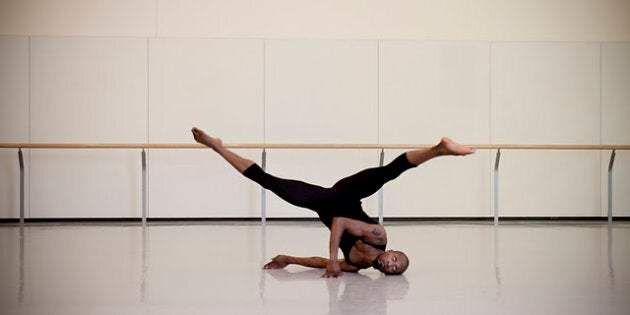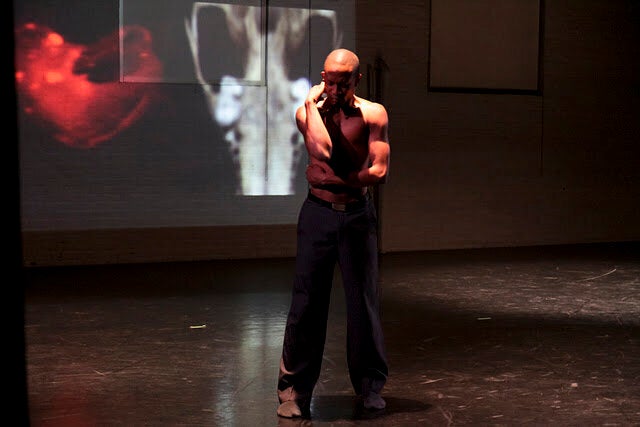
I come from a culture that doesn't dance.
There is a series of videos you may be fortunate enough to catch on YouTube at some point. It comes from a 1966 film of the Berliner Philharmoniker performing Beethoven's Fifth Symphony under Herbert von Karajan (and the reason you probably won't ever see it is that the Berliner Phil has a strong attachment to those weird laws about "copyright" and such). It's a bunch of white European guys playing the music of a white European male composer, sure, but they do play it sublimely, and at the very end, after four movements of Sturm und Drang, of the kind of dramatic musical emotionality that defines the Romantic period, Herbert closes his eyes and lets out a quiet sigh. That ideal -- beauty and elegance through restraint -- epitomizes high culture as I learned it and grew up with it.
As an extension of that overriding principle, all the arts are subjected to a kind of elitism that removes it entirely from the experience of the common man, and perhaps dance most of all. You are not a dancer -- no one other than a rarefied 0.05 per cent of the populace are allowed to call themselves dancers -- and your role as a loyal patron of the arts is to sit very still and very quiet in the dark as you watch others perform.
"In Western culture, we put it on stage. What does it do for culture if we think it's not part of our lives, and if it's not, then who goes to see it?" wonders Toronto-based dancer/choreographer Kevin A. Ormsby.

Modern dance club culture is seen as something fringy and decadent, and very peripheral to the 'real world' of commerce and work. From the few social occasions where dancing was allowed, I knew that I loved it, but my social circles were always heavy on people who just didn't dance. That changed drastically when I started to explore a fascination for the cultures of the African continent about five years ago.
When an African musician plays, dance is merely an extension of the music from performer into its listeners. Audience members show their appreciation by jumping on stage to shake it with the band. "Nature dances," says Kevin. "It's about the ebb and flow of the water. It's our life, we dance without knowing it. It can be walking down the street, brushing your teeth in the morning."
In the industrialized world, we've created societies that restrict all movement. We're expected to sit still in front of a computer screen for hours and hours at a time, and the "better" our lives get in material terms, the less and less we move. "Our sense of physicality changes," Kevin notes. "We don't listen to our bodies, we listen to our minds because we've been trained to intellectualize."

We love our rigid set of definitions and restrictions so much as to import them to other cultures. It's a frustration routinely felt by Haitian dancer/choreographer and 2008 Claus Award winner Jeanguy Saintus.
"The one size doesn't fit all," he says firmly. "Moving, dancing is difficult for us. First, there is prejudice for us, from the Caribbean. When we try to do something, it's either not 'African' enough, or not 'classical' enough."
He describes an approach that is far from the European classical ideal of producing a corps de ballet that's completely uniform in movement and technique.
"I was telling the dancers while we were rehearsing to take a four count -- not mine, but theirs. That's the way I always work." His view of dance is simple. "Dancers are people who want to dance," he says. "Technique is easy. If they feel nothing, it's not working. People are afraid to express themselves exactly as they feel. Even the dancers don't believe in what they can do naturally."
He was driving down a street in Haiti and happened to see someone gesturing with their hands, an everyday motion that he incorporated into a piece he was choreographing -- but which was questioned in performance. "Some people were questioning 'is that contemporary or not?' People want to tell you how to interpret."
Jeanguy's work is highly expressive, and like Kevin Ormsby's, blends a range of influences from Caribbean and African to classical ballet and contemporary dance, producing performances that are theatrical and deeply affecting. Despite winning awards and garnering an international profile, there is a relentless pressure to conform to pre-set ideals. "It's difficult -- sometimes we depend on funding," Jeanguy says. "The young dancers just want to experience. They feel something. They want to express something, not just portray a technique."
As Kevin points out, the heart itself is in perpetual motion, and our very DNA spirals in an endless dance of its own. My own epiphany crystallized in a concert at Toronto's still new Koerner Hall. It's a spectacular concert hall, part of the Royal Conservatory of Music no less, and as beautiful in its aesthetics as the acoustics are pure in tone (Yo-Yo Ma actually requested a concert to come try it out if you don't want to take my word for it).
The first concert I ever saw there was Senegalese singer Baaba Maal. As the first set went from slower pieces into full band treatment and a West African polyrhythmic party began in earnest, the audience got a little restless -- unsure if we were actually allowed to dance in the pristine and refined environment. But that confusion didn't last long. By the end of the evening, the aisles were full of wiggling bodies and there was a stream of people dancing on stage with the band. "Everyone who wants to can dance," Baaba said, "that is how it should be."
Dance is about feeling and about living. They should teach it in elementary school. Everybody should -- everybody can -- everybody does dance.
With many thanks to Kevin A. Ormbsy, Artistic Director of Kashedance, and Jeanguy Saintus, Artistic Director of Ayikodans Dance for their input. Images of Kevin A. Ormsby by Christopher Cushman.